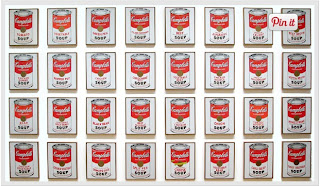Line: Lines are marks made by a pointed tool: brush, pencil, pen, etc. Lines can vary in width, direction, curvature, length, or color.
I chose this photo because of the clear lines that form of railing.
I chose this painting because of the 2 strong yellow lines that shot out of the painting.
Shape: Shapes are formed wherever the ends of a continuous line meet. Geometric shapes such as circles, triangles or squares have perfect, uniform measurements and don't often appear in nature. Organic shapes are associated with things from the natural world, like plants and animals.
I chose this photo because of the perfect the metal forms an oval.
I chose this painting because of the shape of the sphere and how it shapes the image.
Color : Color wheels show the primary colors, secondary colors, and the tertiary (intermediate) colors. They also show the relationships between complementary colors across from each other, such as blue and orange; and analogous (similar or related) colors next to each other such as yellow, green, and blue. Black and white may be thought of as colors but, in fact, they are not. White light is the presence of all color; black is the absence of reflected light and therefore the absence of color.
I chose this photo because of the color it contains and it has all primary and secondary colors.
I chose this painting because its colorful.
Value (Tone): Value, or tone, refers to dark and light; the value scale refers to black and white with all gradations of gray in between. Value contrasts help us to see and understand a two-dimensional work of art.
I chose this photo because it shows the different shades and where it has to be darker and where its supposed to be lighter.
I chose this painting because it shows the different shades of the cool it shows where its supposed to be lighter and where it should be darker.
I chose this photo because Its three-dimensional and it shows length, width, and height.
I chose this painting because it makes it seem like they are on a three-dimetional place but in reality its not.
I chose this photo because it shows texture and it looks like its scratchy.
I chose this painting because it looks like the paper that it was drawn on is rough and bumpy.
Space: Space refers to distances or areas around, between, or within components of a piece. Space can be positive (white or light) or negative (black or dark), open or closed,shallow or deep, and two-dimensional or three-dimensional.
Principles of Design:
I chose this photo because of the balance of the color on both wings of the butterfly and the shape how it balances futon both sides.
I chose this painting because of the balance of people throughout out the picture it balances out the whole painting.
I chose this photo because it shows the contrast of the colors and how they are going in a different direction.
I chose this painting because of the contrast of the colors the difference of the light part of the flower and the dark part of the flower.
I III chose this photo because of the the focus on the leaves and it emphasizes the details also.
I chose this painting because it emphasizes the ends of the waves and the details of the water.
I chose this photo because it shows the movement of water in the river.
I I chose this painting because it shows the movement of the water in the ocean.
I chose this photo because it shows the pattern of the zebras stripes.
I chose this painting because it shows the pattern of the cans on the wall.
I chose this photo because of they rhythm of the different shapes.
I chose this photo because of the different shapes int he painting which shows a rhythm.
Unity: Unity means that all elements in an artwork are in harmony. Unity brings together a composition with similar units. For example, if your composition was using wavy lines and organic shapes you would stay with those types of lines and not put in even one geometric shape.
I chose this photo because of the different type of lines which shows unity.
I chose this painting because of the different set of lines and shapes which shows unity.



























No comments:
Post a Comment